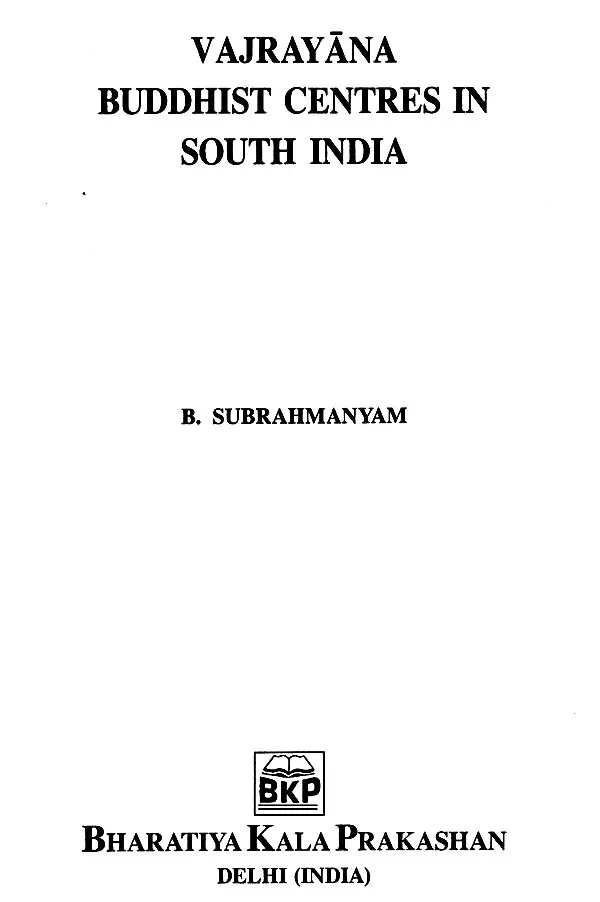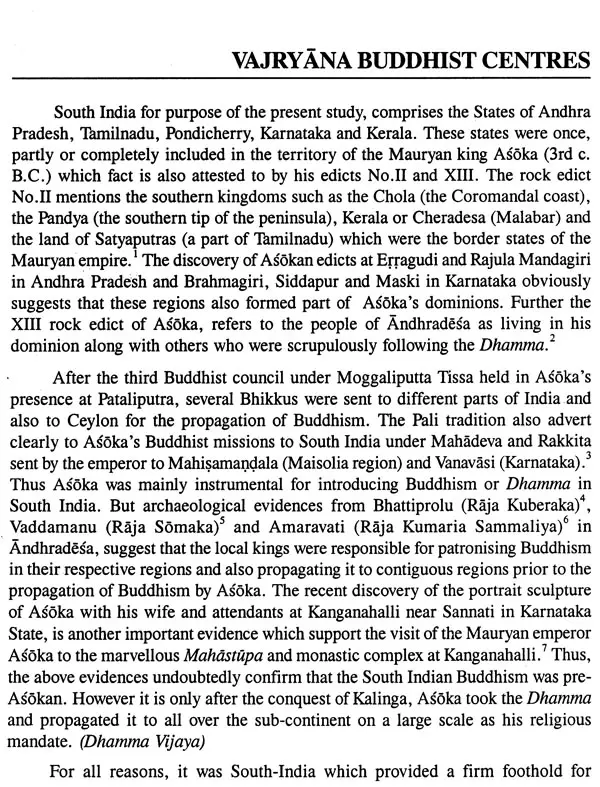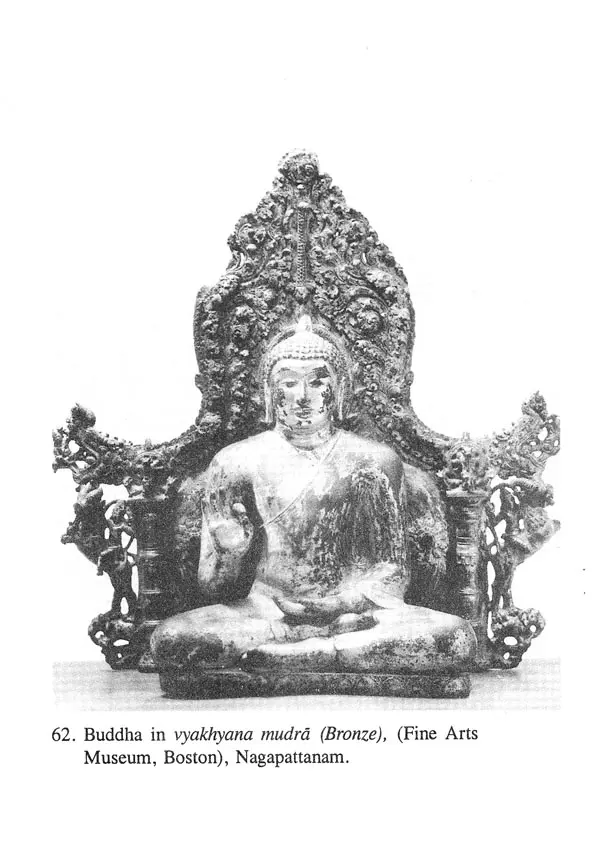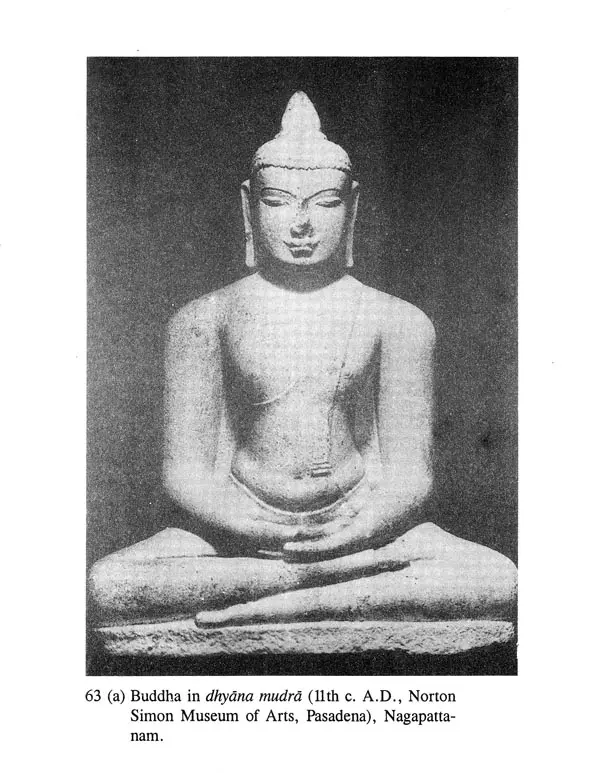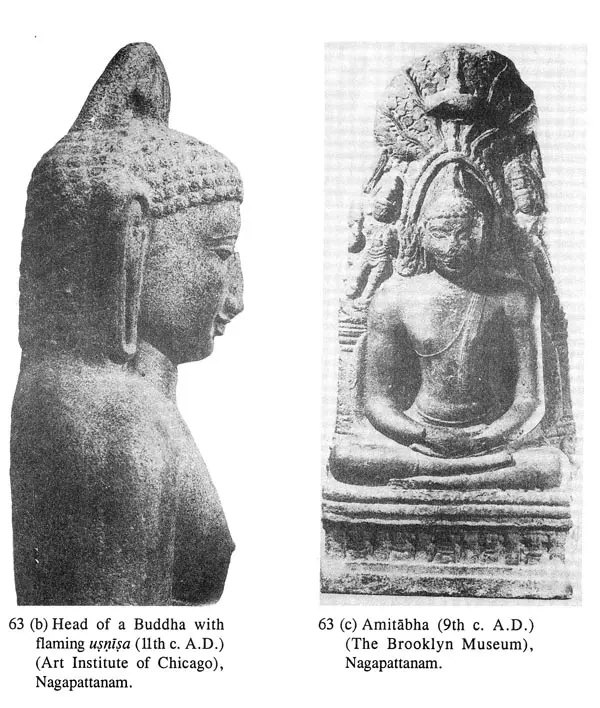About the Book The glorious epoch in the history of Buddhism in India marked the efflorescence of culture in every aspect of life. The present book deals with one such aspect i.e. the rise of the Tantric or Vajrayana Buddhism at various centres, particularly in South India. The author in this book made an attempt to trace the circumstances in which the Vajrayana school of f philosophy took the reins of degenerated tenets of earlier orthodox schools of philosophy and made enquiries into various aspects that it contributed for the continuity of Buddhism as a religion upto the post cara times in South India. Vijayanagar.
The present book Vajrayana Buddhist Centres in South India is the first of its kind which deals comprehensively with the history of Buddhism in South India and the concentration of Vajrayana Buddhist centres. The author places before scholars a dis-passionate acco unt of the Vajrayana Buddhist centres, with their historical background and the emergence of various deities with the relevant sadhands, besides the probable beginnings of Vajrayana Buddhism in South India.
The book contains new inter pretations, besides reporting fresh dis coveries and particularly the various factors that prompted to the emerg ence of the concept of pancha Buddha or Panch Vira cult from the Brahmani cal and Buddhist origins. The new theo ries cause a flutter among the scholars and generate new thoughts on the subject. The acceptability or otherwise of the ideas putforth by the author is left with humility, to the scholarly world.
About the Author Born on 28-8-1950 at Guntur in Andhra Pradesh. Dr. Subrahmanyam pursued his Post-Graduate studies in Ancient Indian History and Archaeo logy in the P.G. Centre. Guntur and obtained his M.A. Degree in 1974 from the Andhra University, Visakha patnam. He joined in the State Archaeo logical Department as Technical Assistant in 1975. Since then, he actively participated in explorations, major excavations and the transplanta tion of temples. He took his Ph.D. Degree from Mysore University, Mysore in 1986 and P.G. Diploma in Public Relations from Dr. B.R. Ambedkar Open University, Hyderabad in 1993. Presently, he is working as Assistant Director (Technical) and looking after the Excavations Branch in the Dept. of Archaeology and Museums, Hyderabad.
Apart from his participation in Seminars, he has contributed a good number of research papers to various reputed journals and he authored. several books viz., Thotlakonda: A Buddhist site in A.P. (1992), Directoy of Monuments- Antiquarian Remains in Anantapur district: A.P. Vol. I (1993), Pre-proto and Early Historic Cultures of Krishna-Tungabhadra Valley (1997). Andhra Desamulo Buddha Dhatu Petikalu (Telugu 1997), Buddhist Relic Caskets in South India (1998), Buddhist Inscrip-tions of Andhradeśa (1998), Buddhist Relic Caskets in Andhradesa (1999), Lotus Petals: Lumbini Festival 2000, and A Monograph on the Gold Coins of the Kakatiyas (2000). Curren tly he is busily involved in publishing books on Buddhism and its various. facets in Andhra Pradesh.
Foreword Dr. B. Subrahmanyam, by virtue of his position as an Archaeological Officer in the State Department of the Archaeology & Museums, Hyderabad, being closely associated with explorations, excavations, conservation of excavated Buddhist sites and monuments, transplantation of temples and publication of reports, has aptly selected the study of one of the untouched areas of Buddhism i.e. "Vajrayana Buddhist Centres in South India". He deserves to be congratulated for taking up a herculean task not only collecting the published and unpublished data, but also for identifing a variety of icons and images discovered from different regions of south India and correlate with the relevant dhyanas and sadhanas mentioned in the Tantric texts such as Guhya samaja tantra, Advayavajra Sangraha, Nispannayogavali.
Preface Unlike the other religions of India, Buddhism never confined itself to the limits of India but travelled smoothly and silently across the world, disseminating its eccentricitic ideas from time to time, more particularly, in the Tantric age (4th-5th c. A.D.). This age witnessed not only the gradual decline of Buddhism, but also saw the resurgence of Vedic Brahmanism. To withstand the on slaught of neo-Brahmanis, the Buddhists had no option but to seek the help of Tantricists, probably to induct Tantricism into the orthodox Buddhism and in order make the religion more populate and attractive. Candidly speaking, it was a remarkable transformation in the history of Buddhism when it passed on to the stage of theism from aetheism.
Introduction Vajrayana, otherwise known as Tantrayana or Mantrayana is an offshoot of Mahayana, literally based on the Madhyamika (Sanyavada) or Bodhisattvayana school of philosophy, consolidated by Acharya Nagarjuna. The term Vajrayana though literally means adamantine or the Thunderbolt vehicle, in Buddhist philosophy it applies to Sanya which symbolically represented by Vajra (Thunderbolt). The believe that Sanya stand for ultimate reality and hence the innumerable Vajrayanists that Sanya in essence. In this doctrine, when the Bodhi mind gods and god goddesses are attains Nirvana, it merges in Sanya and there it remains in eternal bliss and happiness. In Vajrayana, Nirvana comprised three elements viz., Súnya, Vijñana and Mahasukha. The commingling of the three is termed as Vajra which is firm and that can not be cut, changed, burnt, destroyed, pierced or penetrated but which destroys all evils. Hence, the Buddha was represented as the Supreme (Adi) Buddha Vajrasattva or Vajradhara, a holder of the Thunderbolt. The weapon Vajra or Thunderbolt is shown in Buddhist sculptures as a staff with five prongs which symbolically represent the five divine forms of Diryani Buddhas (Pancha Buddhas). Vajra is also the name of a weapon usually held by ascetics and monks. Vajrayana teaches a monistic (Advaita) philosophy in which all beings are Vajra-sattvas and only one that Vajrasattva is immanent in all beings.
Book's Contents and Sample Pages
